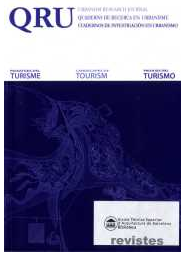La vida breve de la ciudad de veraneo; análisis de planes para un turismo residencial: Costa Blanca 1959-1973
DOI:
https://doi.org/10.5821/qru.9592Abstract
The economic recovery following WWII, produced in Western Europe a new social demand: massive tourism. To meet this new demand, Spain began the intensive construction of its coast line. The first stage of this transformation resulted in a period of experimentation on new residential typologies and urban plans able to satisfy the needs of an unknown new user: the massive holidaymaker. This article analyses some of the main urban plans for leisure built during the Spanish tourism boom in Alicante’s and western Murcia’s coast; a territory completely restructured by tourismDownloads
Issue
Section
License
Those authors who have publications with this journal, accept the following terms:
a. Authors will retain their copyright and guarantee the journal the right of first publication of their work, which will be simultaneously subject to the Creative Commons CC BY-NC-ND-4.0 recognition license that allows third parties to share the work provided that its author and its first publication are indicated in this journal, but they cannot be changed or used commercially.
b. Authors may adopt other non-exclusive license agreements for the distribution of the version of the published work (eg: deposit it in an institutional telematic archive or publish it in a monographic volume) provided that the initial publication in this journal is indicated.
c. Authors are allowed and recommended to disseminate their work through the Internet (e.g. in institutional telematic files or on their website) before and during the submission process, which can lead to interesting exchanges and increase citations. of the published work. (See The effect of open access).













